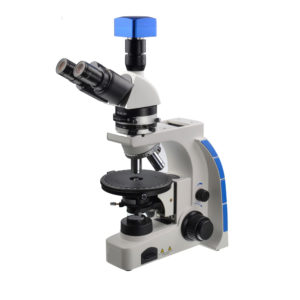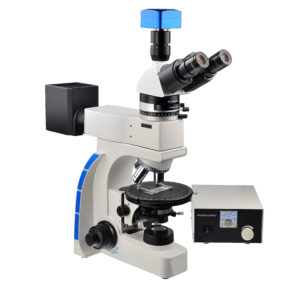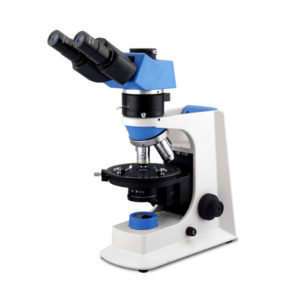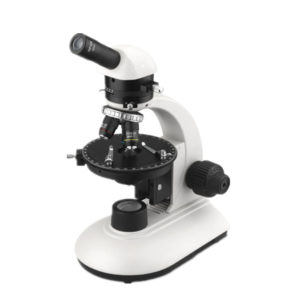- Home
- Products
- Biological Microscope
- Zoom Stereo Microscope
- Fluorescence Microscope
- Metallurgical Microscope
- Polarizing Microscope
- Video Digtal Microscope
- Microscope Camera
- Astronomy Accessory
- Microscope Accessory
- Magnifier Magnifying
- About Us
- Contact Us
Polarizing Microscope
XUP100 Optical Polarizing Microscope
- UCIS Infinity Independent Achromatic Optical System
- WF10xPlan Eyepieces, 20mm Field of View, High Eye Point up to 21mm
- Seidentopf Binocular/Trinocular Viewing Head, Inclined 30º, Rotatable 360º
- Intermediate tube, with built-in focusable and centerable Bertrand lens, slider-type analyzerand compensator slot
- Light Distribution: Binocular 100% or Binocular/Trinocular 20%/80%
- 52-75mm Interpupillary Distance Settings
- ±5 Diopter Adjustment
- Quadruple NosepieceInward Facing with Positive Click Stops
- Infinity “Strain-free”Achromatic 4x, 10x, 40x(S) and 100x (S/Oil) Objectives
- Rotating Stage, 156mm x 138mm, Movement Range 76mm x 54mm
- A. 1.25Polarizing Condenser
- Different types of compensators: Full-wave plate, Quarter-wave plate, Wedge compensator
- Coaxial Coarse and Fine Focus Mechanism with Markings on Fine Focus K Fine Focus Sensitivity 0.001mm
- 6v20w Halogen Illumination, 110-240V Wide Voltage
- Dust Cover, Clear Blue Filter, Power Cord, Immersion Oil
XUP400 Optical Polarizing Microscope
Also named mineralogical microscope, is necessary for researching double refraction sample, which is widely used in geology, mineral, chemical industry, medical, drug, criminal investigation fields etc.
Professional binocular head can keep the cross in the right-hand eyepiece always same when the eyepiece tubes turned.
Analyzer unit : 360° rotatable analyzer with division, can be locked and moved out of the light path.
Centering nosepiece, non-stress infinity plan objective.
Rotatable 360° stage , division 1°, vernier division 6’, adjustable center which can be locked.
Polarizing unit: rotatable 360°, scaled, can be locked.
Attached polarizing mechanical stage: professional design for laboratory’s user to avoid objective hitting.
Compensator: Quartz wedge, First class red slip, λ/4 slip.
Swing-out condenser, Swing the lens in to get excellent image when using high power objective to make observation.





